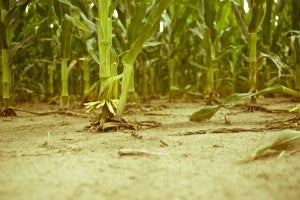Pill holds promise for reducing fertilizer’s unwanted side effects

Can a little pill solve the problem of fertilizer waste? It sounds futuristic, but it could become a reality in the next 10 years, according to recent article on AgWeb.com.
The article highlighted new developments in nanotechnology aimed at creating a “fertilizer pill” that could detect chemical signals from plant roots and release nitrogen according to those signals. The pill would allow for nitrogen to be released on an as needed basis, thereby reducing fertilizer waste byproducts that are harmful to the environment.
Although fertilizer has undeniable benefits for crop yields, excess fertilizer that runs off into our waterways is damaging to rivers, oceans and the climate.
Global potential
This development could have huge potential for agriculture across the globe – today, we are using the best available science to recommend when and where to apply fertilizer to maximize yield and minimize environmental impact, but we can’t yet make recommendations at the micro level that would avoid fertilizer excess.
Researchers are hopeful that this technology will be ready for implementation within the next 10 years. Of course, we can’t afford to wait, which is why we’re working with farmers, crop advisors and service providers to meet new demands in the U.S. supply chain for fertilizer efficient grains.
Redefining precision agriculture
But what’s so exciting about the fertilizer pill is that it takes the idea of precision agriculture to a whole new level. Individualized, plant-specific releases of nitrogen would eliminate the need for blanket application of fertilizer, which is common practice to ensure high yields and to meet the increasing demand for food across the globe. With 9 billion mouths to feed by 2050, high yields are critical to ensuring a stable food supply.
There are many researchers, scientists and farmers working to develop technologies that fine-tune the manual delivery of fertilizer. For example, we use models that take into account how much fertilizer is needed given weather conditions and time of year, and make application recommendations to ensure high yields.
But even in the same field, certain parts of the crop will have different needs than plants located in other parts of the field. The bottom line is that the needs of the crop and of an individual plant change from year to year and from location to location. So it’s hard for current precision farming technologies to know exactly where and when plants need fertilizer.
Reducing nitrogen losses
In the U.S., nitrogen fertilizer also accounts for at least half of farmers’ input costs, even though on average, 50 percent of the nitrogen applied is lost – resulting in emissions of nitrous oxide, a greenhouse gas 300 times more potent that carbon dioxide, and pollution of our drinking water supplies.
The fertilizer pill technology claims to reduce losses to 15 percent or lower – which is an exciting prospect for farmers’ bottom line as well as for the environment and our communities.
On the other hand, this product and others like it may have limitations.
Additional research will need to ensure that such a product doesn’t have environmental side effects such as toxicity. If we’re trading one set of environmental impacts for other problems, then the technology’s potential is severely limited. But on the whole, if the fertilizer pill doesn’t have other impacts, and if the price is right, this could be a real win-win for farmers and food security in the developed and the developing world.












